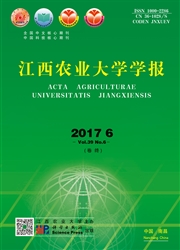

 中文摘要:
中文摘要:
烟粉虱是一种由许多生物型组成的复合种,是一种世界性的重要害虫。不同生物型的烟粉虱在寄主范围、传毒能力、抗药性等许多生物学特性方面存在差异。利用mtDNA COI基因作标记对上海地区的烟粉虱生物型进行了分析鉴定。结果表明,所测上海10个代表性地区中,闵行区只检测到B型烟粉虱,嘉定、青浦和徐汇区只检测到Q型烟粉虱,其余各地区B型和Q型两种生物型烟粉虱共存。所测上海地区共45个种群中,有31个种群为Q型,占所测种群的68.9%,14个种群为B型,占31.1%。而且,大棚采集种群多为Q型(Q型占87.0%)。结果说明Q型烟粉虱已在上海地区广泛存在、大量发生,并有取代B型烟粉虱成为上海地区烟粉虱主要危害类型的可能。
 英文摘要:
英文摘要:
The Bemisia tabaci(Gennadius) species complex is one of the most devastating agricultural pests in the world,which is composed of numerous biotypes.These biotypes show different biological traits with respect to host range,virus-transmission capabilities and insecticide resistance.In this study,the 45 Bemisia tabaci populations from 10 different regions of Shanghai were collected and analyzed based on the gene sequence of Mitochondrial cytochrome oxidase I(mtDNA COI).The results show that the populations from Jiading,Jinshan and Xuhui districts were only Q biotype,and only B biotypes was found in Minhang district,but B and Q biotypes co-exist in other districts.Moreover,among the total 45 populations of Bemisia tabaci identified in this study,31 populations were Q biotype,68.9% proportion and B biotype 31.1% respectively.In addition,most populations collected from greenhouse were Q biotype(87.0%).The results indicated that Q biotype spreads widely in Shanghai area and may replace the B biotype as a major crop pest in Shanghai area.
 同期刊论文项目
同期刊论文项目
 同项目期刊论文
同项目期刊论文
 期刊信息
期刊信息
